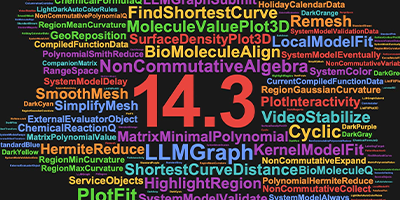Developing Light Microscopy Techniques with Mathematica
For Daniel Zicha, head of Light Microscopy at Cancer Research UK, Mathematica is the ultimate tool for biomedical research because it’s “quick to develop and then quick to test and visualize the results conveniently and interactively.”
Zicha uses Mathematica in the development of light microscopy techniques as well as in collaborative research in applications of image processing and analysis methods.
Within his collaborative research work in the area of metastasis, Zicha’s use of Mathematica to visualize and qualitatively analyze cell morphology led to the discovery of a novel metastasis suppressor. In this video, he describes Mathematica‘s role in the project and the advantages of having one environment for rapid prototyping, qualitative analysis, and interactive visualization.
Learn more about Zicha’s research and see other Mathematica success stories on our Customer Stories pages.



Awesome blog entry! The rich feature-set of Mathematica is so under-utilized by biologists and biomedical researchers, that stories like this inspire and help spread the word that Mathematica can be a powerful ally in biology research. Well done!